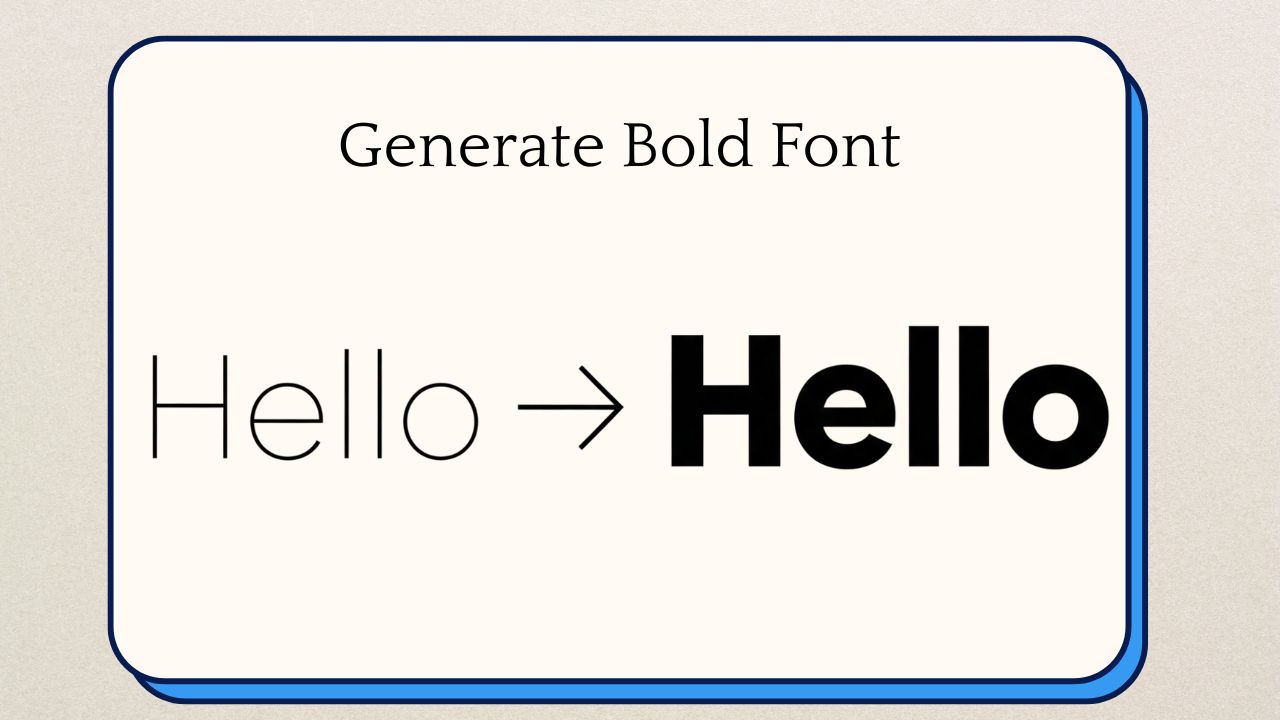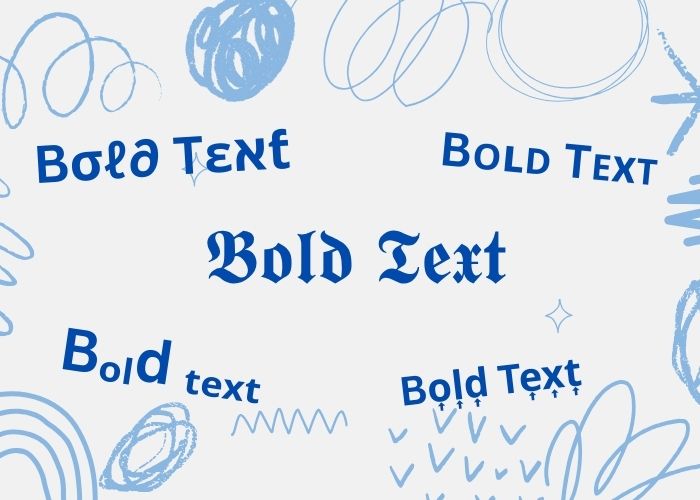Good text presentation is important for readers and promotes readability in the digital age. The simplest but perhaps most powerful text presentation feature is a bold font which can be used effectively to emphasize headings, important messages, and keywords. Knowing how to generate bold fonts using a bold text generator adds to the content of your work whether you are creating a document, a blog, or a social media post. Below we will cover the details of how to make a bold font.
What is a Bold Font?
Characters in bold font are thicker, darker, and more distinguishable than those in regular typeface. The primary function of bold is to emphasize words, terms, or headings that draw attention so they can be differentiated from other content. Bold also captures attention like text, especially in heavier paragraphs or denser information, all while simplifying the reading process. Bold can be found in various media, including digital content, documents, websites, social media posts, and others. Technically, bold has a different term as it refers to a typeface variation that has heavier strokes. Whether you use an online tool like a bold text generator, HTML tag, or keyboard shortcut, bold fonts improves the readability and appearance of content.
How to Generate Bold Fonts?
The steps below will allow you to rapidly create bold fonts using the Bold Fonts Generator:
- Use your web browser (i.e. Mozilla, Chrome, etc.).
- Search fancytextgenerate.com and open it.
- Now, you are on the homepage of the Bold font generator.
- Once you are on the bold font generator page, type your text in the text box.
- Click the “Generate” button.
- After clicking the “Generate” button, you will see your text displayed on the screen bolded.
- It is easy to use the bold font copy and paste method anywhere online.
Read Also: Pakistan National Cricket Team vs Bangladesh National Cricket Team Timeline
Features of Bold font
The features of Bold Font are mentioned below:
1. Increased Stroke Weight
Bold-weight fonts have heavier strokes and darker weight than regular-weight fonts, making letters more distinct. It gives each character a heavier weight because each line is thickened; therefore, it sets the text apart from the content around it. Bold increases visibility and works especially well for important messages and headings.
2. Increased Focus
Bold fonts is used for the emphasis of certain words. It also acts as a visual cue emphasizing or directing readers’ attention to particular portions of the text. Whether highlighting important facts, warnings, or directions, bolding text is a simple way to express that emphasis without the use of multiple colors, symbols, etc.
3. Improved Readability
If you use bold fonts the right way, it can improve the readability of your content. It takes the raider’s attention to important points and segments long sections of text. It helps you bold important phrases to improve readability and understanding, especially in lengthy articles or heavy documents.
4. Structure & Hierarchy
Using a bold font also provides its own distinct visual hierarchy within your content. By bolding headings, titles, and important points, you create organized layers to support a reader’s engagement with the content. It creates better organization and flow, making it easier for users to find useful information in a more timely manner.
5. Compatibility of Platforms
Whether in word processors, web pages, messaging programs, or social media, bold fonts is compatible with many platforms. Bold typefaces remain remarkably malleable and compatible, assuring consistency of display across systems and devices, either by using formatting tools, shortcuts, HTML tags, or Unicode characters.
Conclusion
One simple but effective strategy for increasing the visual appeal, clarity, and organization of your material is to utilize bold type. There are a variety of methods to produce bold fonts according to your platform, from formatting in Word or Google Docs to HTML tags, Markdown syntax, or using a Unicode generator for social media. Bold type not only emphasizes important points in your writing, but organizes your writing, increases readability, and guides the reader’s attention to the most critical details. Basically, you can use bold fonts creatively and effectively, and make your content visually appealing and easier to navigate as long as you learn how to use the appropriate practice for the medium.
Read Also: Best TikTok Story Viewer Apps | England Cricket Team vs New Zealand National Cricket Team Timeline
FAQs
1. What is the process for making text bold in Google Docs or Microsoft Word?
If you want to make text bold in Word or Google Docs, it is as simple as highlighting the text in Word or Google Docs and pressing Ctrl + B (Windows) or Cmd + B (Mac). You can also turn on or off bold style text, by clicking the “B” next to the text style on the toolbar.
2. Is it acceptable to use bold fonts on Facebook or Instagram too?
Yes, however, social media networks will not support native bold formatting. Instead, you can test the text into bold Unicode characters using an online bold fonts generator, such as a fancy text generator, and then paste it into your post or bio.
3. In HTML, what’s the difference between <strong>and<b>?
While both tags<strong> and <b> will make text bold, it adds semantic significance; which is advantageous from an SEO and accessibility standpoint. Tells search engines, and screen readers, that what follows is important, while is simply a stylistic option.
4. Can all devices read the bold font?
All devices can read text that has been bolded using standard formatted text (like Word or HTML). Devices that do not support some character sets, or very old browsers, may not display Unicode bold fonts generated from online manipulation correctly.
5. What is the purpose of bold font?
The main purpose of bold font is to emphasize important information within a body of text. When these items stand out from the surrounding text it allows the reader to focus on the important words, phrases, headings, or instructions. This is especially important in documents that are long such as websites and social media posts, as bold font improves readability, provides a visual hierarchy, and helps organize the content on the page.

